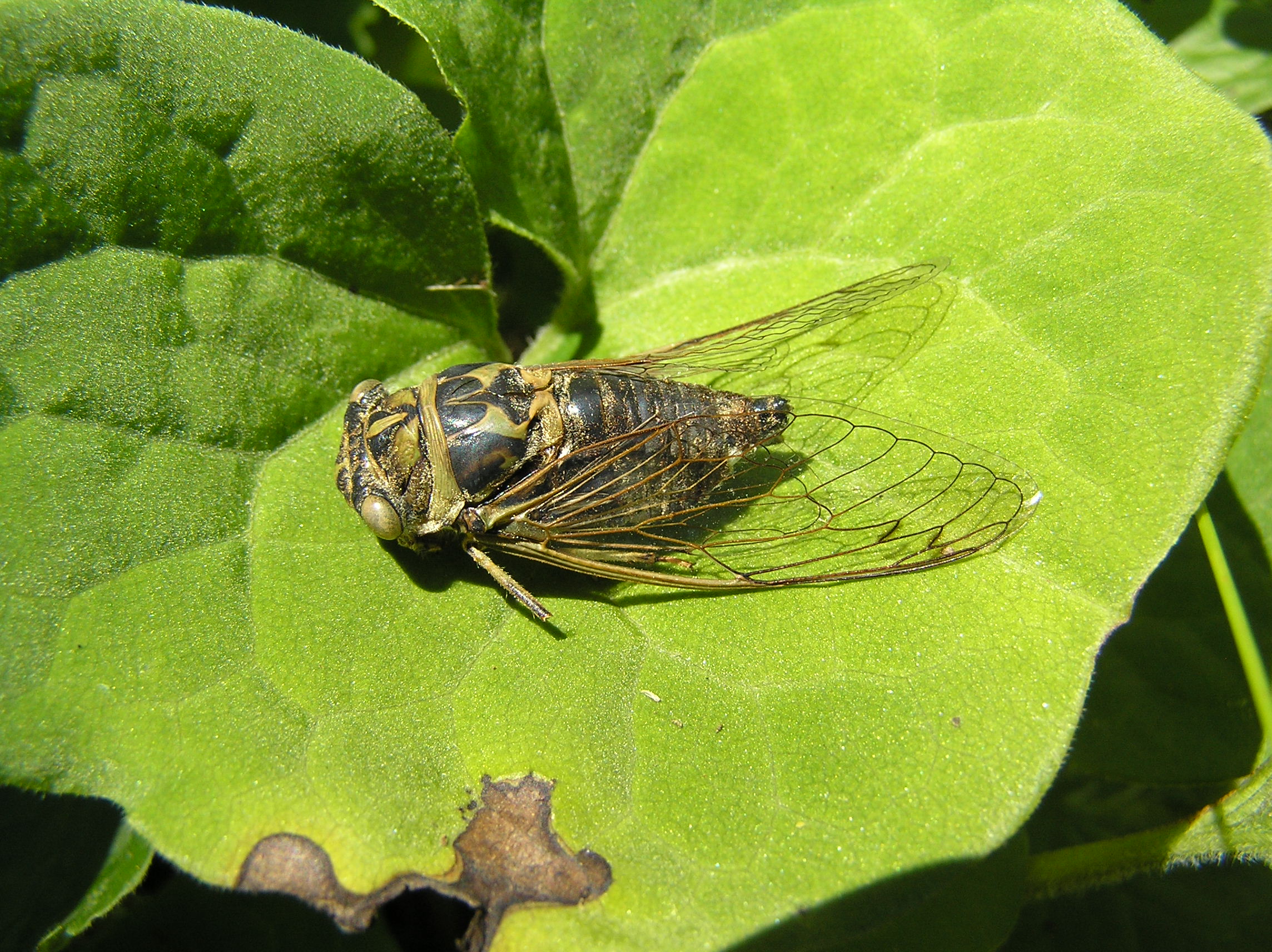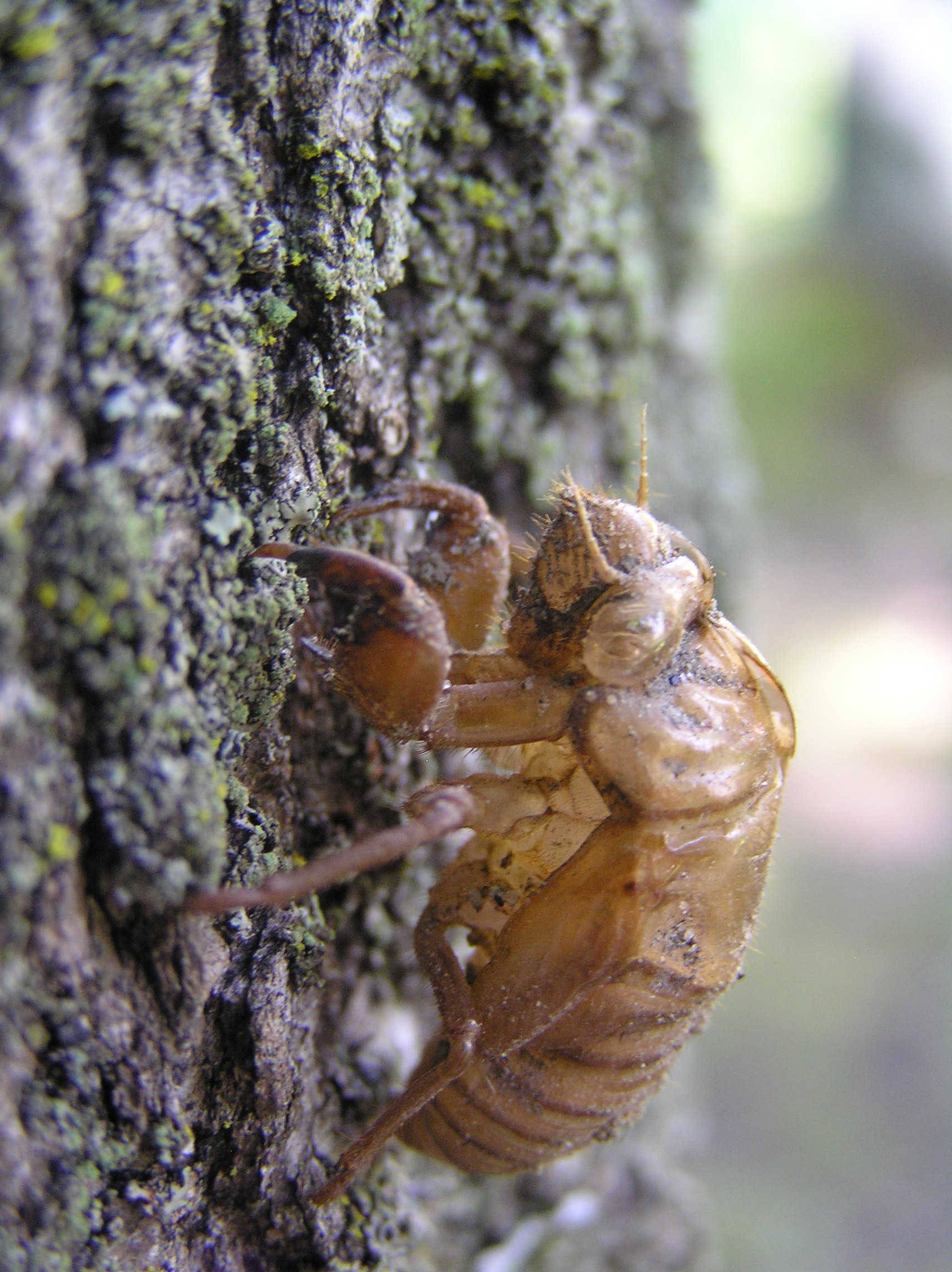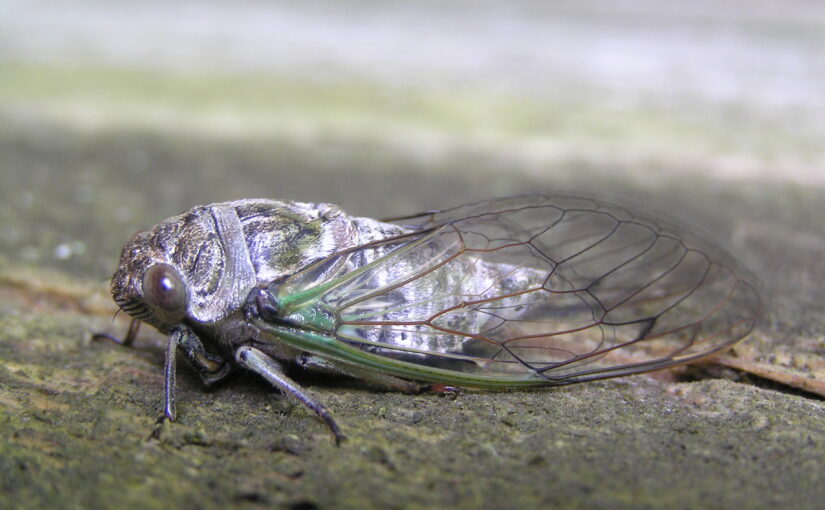Today’s post comes to us from the Discovery Program staff at Charleston Lake Provincial Park.
Most summer visitors to the park will no doubt hear a loud buzzy “droning” sound, broadcasting from high up in the trees. The sound starts soft and gets louder, before tapering off. Some people say it sounds like a buzzing electric saw, with each burst lasting about 15 seconds.
That distinctive “buzzy call” is from the Dog-day Cicada, a type of insect that’s a little smaller than a typical house key (about 3-4 cm in length). Only the adult male Cicadas call, with the purpose to try to attract a female mate (in the same way that male songbirds sing). The distinctive Cicada call is typically heard from mid-July through to early fall, and it is particularly noticeable on hot days. Cicadas like to sing with the sun: you will only hear them during the day. Unfamiliar with their unique sound? You can find recordings of their buzzing online by searching ‘Dog-day Cicada sound’ on any device that allows audio playback.

How’s a Cicada similar to a handsaw?
Have you ever wobbled the blade of a handsaw or a piece of sheet metal? When a handsaw blade or sheet metal is wobbled, the flat surface distorts and then pops back into shape. This movement makes a loud sound. Obviously, a male Cicada doesn’t use a piece of metal. But by using its muscles, the Cicada does wobble a special membrane inside its abdomen. The sound is then amplified in the abdomen, which is a largely empty, hollow chamber (a megaphone of sorts) resulting in the loud distinctive droning call that we hear.
That call is one of the quintessential sounds of summer. In fact, that is how this Cicada got its name! The term “Dog-day” refers to the fact that this Cicada is most actively calling during the hot, muggy “dog days of summer” (themselves named for the time of year when Sirius, the ‘Dog Star’ from the constellation Canis Major, the Greater Dog, is prominent in the night sky).
Though commonly heard, adult Cicadas are infrequently seen. That’s because they’re well camouflaged and typically perch high up in trees. But there is a time when you’re more likely to see one (or at least part of one).
From underground to the tops of the trees
Dog-day Cicadas live for several years, and they have almost dual lives. A female will insert her eggs into tree twigs, using a specialized sharp, tube-like organ called an ‘ovipositor’ located at the end of her body. The eggs hatch into tiny nymphs which then fall from the trees down to the ground and dig down to tree roots. There they grow underground, feeding on the sap of tree roots until it is time to molt into adult form.
It will take several years for the nymph to develop. Once ready to molt, the robust and wingless nymphs will dig to the surface with their hefty, digging front legs, and crawl up a tree trunk. There they undergo a dramatic transformation, as they will split lengthwise down their back, with the winged adult emerging (sound like a science-fiction movie?).

A careful observer can find these shed nymphal skins on tree trunks, upon closer inspection. These skins are the most noticeable sign of a Cicada presence that you’ll see.
The adults will fly up into the trees where they feed on sap from twigs (by inserting their piercing and sucking mouthparts into the bark). Adults only live about a month.

Some adult Dog-day Cicadas will emerge every year. Unlike the various and famous “Periodical Cicadas” which only emerge every 13 or 17 years (and are not found in our area, but in parts of the United States and a few places in southwestern Ontario), adult Dog-day Cicada don’t all emerge in the same year and have a synchronized life cycle.
The height of summer
Hearing an adult male Cicada signifies the height of summer is upon us — hooray! While Cicadas are common in many provincial parks, they can also be found in urban areas in city parks and woodlots. Let’s enjoy the warmth of summer, welcomed by the distinctive call of our warm weather, treetop neighbour.
